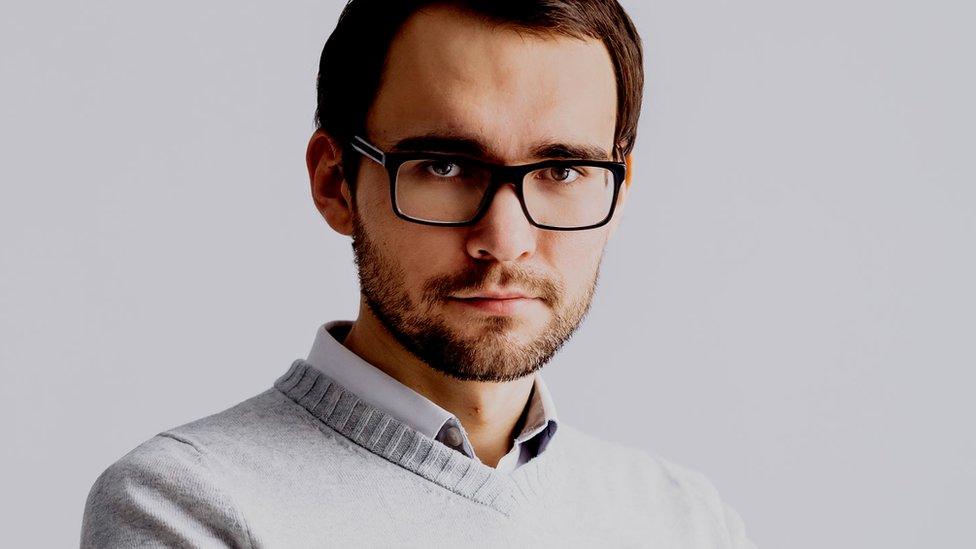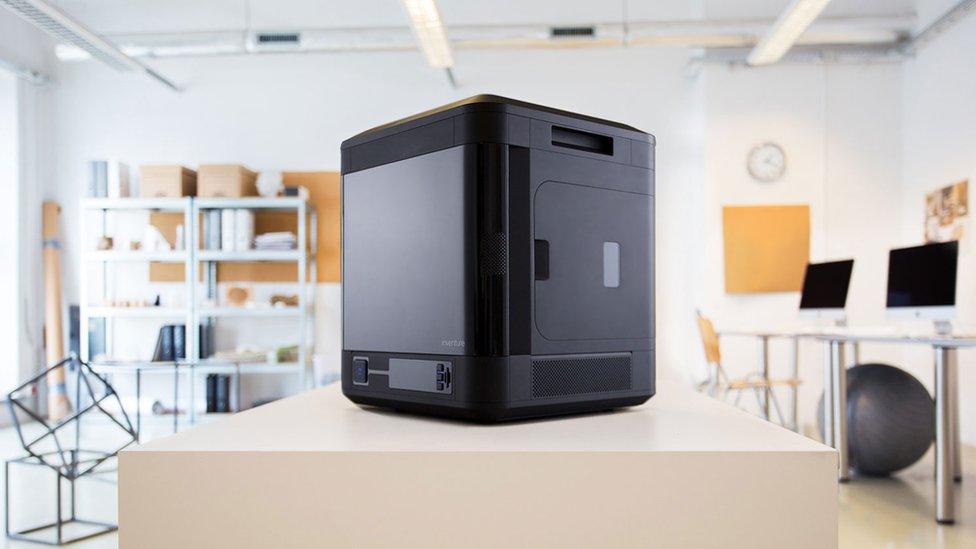'Most firms will be using 3D printing'
- Published
"The future is the medical sector, which is using 3D printing more and more," says Zortrax's Rafal Tomasiak
It sounds like the stuff of science fiction - machines that can "print" solid objects - but 3D printing isn't really printing at all, at least not in the traditional sense.
It is the process of making three dimensional solid objects from a digital file. Successive layers of material are formed under computer control to create objects ranging from plastic bottles to aircraft parts and prosthetic limbs.
A 3D printer is essentially a type of industrial robot.
It's a growing market worth an estimated $5.2bn (£3.4bn) this year, external, according to market analysts canalys.
Now, there are those who believe we're standing on the cusp of a new industrial revolution - with 3D printers destined to become as common in our homes as mobiles and tablets are today. You might expect the boss of one of Europe's youngest players in the market, to agree. But you'd be wrong.
Rafal Tomasiak is the chief executive of the Polish 3D printer company Zortrax, which is less than two years' old. His firm is based in Olsztyn, a mid-sized city in Poland's beautiful Masurian lake district.
All the design and programming is done here. But the printers are actually made on the other side of the world in China; lower manufacturing and labour costs makes that an attractive proposition.
Home printers?
At company HQ, the idea that we'll all be printing our own household goods clearly amuses Rafal: "Whenever I talk to other manufacturers who say there should be one in every home I ask them, 'have you got a normal printer at home?'
"Most say, no. For the time being, 3D printers are not ready to be used at home. The printing process is not as easy as the promotional films present, you need to be a specialist."

Most small and medium-sized firms will be using 3D printing in the future, says Rafal Tomasiak
So what area presents the best potential? Rafal has a very clear view.
"I think that most small and medium-sized companies that have not started using 3D printing will definitely start to do so.
"The future is the medical sector, which is using it more and more, and I think that is where 3D printers will be most useful - saving lives and treating patients."
He's already put those beliefs into action. One of his printers has been used to produce a winch to help physicians carry out the surgical removal of varicose veins at a clinic near Warsaw.
Lightbulb moment
Rafal first got the idea to make his own printer in 2008, when he and Zortrax co-founder, Marcin Olchanowski, saw their first 3D printer at a Hong Kong industry fair.
It was a lightbulb moment. "We were definitely inspired when we saw it," he says.
"It was an industrial printer that used different materials and technologies. We saw immediately something that we'd been thinking about for years, how to solve every company's biggest problem, how to quickly develop and produce a prototype.

3D printing allows firms to quickly design and build prototypes before going into full production
"We decided to build a new type of printer that would be accessible for everyone, for small and medium sized companies, that would be easy to use, offer professional quality and be relatively cheap."
A year later they started to design their own printer. The biggest challenge was writing the right software, which took about three years. Then they tested the prototype for a year and managed to raise enough money to make 20 machines.
But getting the cash for more printers required a different approach. "We thought that finding an investor for such a young company would take a long time," he says.
"Getting a bank loan was practically impossible so we decided to use the crowd funding platform, Kickstarter.
"We were the first Polish company to run a successful campaign. We needed $100,000 but we raised $180,000. It also gave us free marketing," he adds. In fact, many of the firm's original 144 backers are now clients.
Zortrax was able to build the next run of printers and expand its staff and sales network. US computer manufacturer Dell then gave it an order for 5,000 models and now it sells printers in 50 countries and expects to make $3m in profits this year.
Knotty issues
But it faces stiff competition: one estimate suggests there are now 49 manufacturers of industrial grade 3D printers around the world.
This young firm clearly has its work cut out, in an increasingly crowded marketplace. So it is now focusing on making its latest model capable of manufacturing more complex objects with smaller moving parts. It also plans to launch on the Warsaw stock exchange next year.

Zortrax plans a stock market launch next year
But like many new technologies, the sector is throwing up some knotty legal questions. There are fears it will be tougher to control the manufacture of illegal or dangerous objects.
And who owns the 3D printed work? Is it the person who comes up with the design of the object itself or the person who makes the computerised design file ? Or perhaps it is the company operating the printer.
Resolving these issues will no doubt make the legal profession a small fortune.
But they don't dampen Rafal's enthusiasm. He aspires to be one of the three leading 3D printer manufacturers in the world.
"The possibilities are endless at the moment," he says.